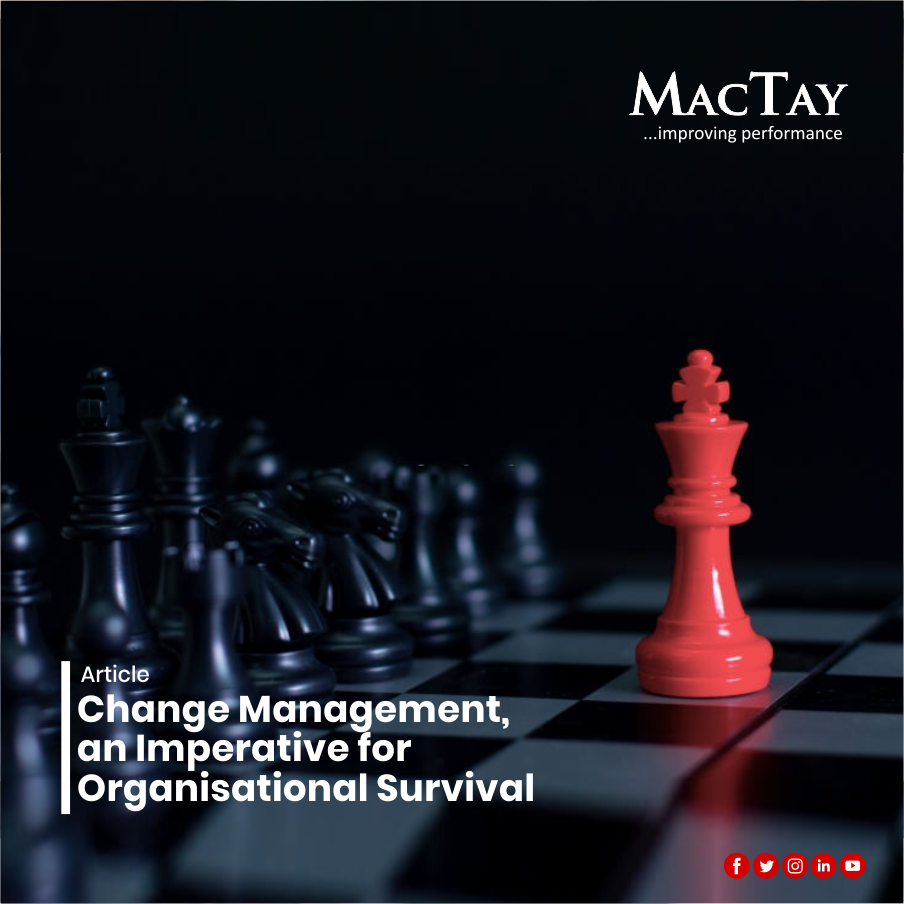
Change Management, an Imperative for Organisational Survival
Change Management Learning Center defined change management as the process, tools and techniques to manage the people-side of business change to achieve the required business outcome, and to realize that business change effectively within the social infrastructure of the workplace. With most organisations daily managing change, one would have to ask the following questions “How are they doing it?”, and “How well does the change management differ? Big organisations keep monitoring their environments and making minor adjustments all the time, many of which will go virtually unnoticed by the majority of their staff. External forces usually motivate significant change within an organisation, and most times, it may threaten the survival of the organisation, for example, merger and acquisition.
Those who are good at responding to change tend to be those with good strategic thinking skills, who can see how they fit into an organisation’s vision. Those who adapt well to change tend to have good Emotional Intelligence, be very resilient and have high self-motivation. They accept change as an opportunity to learn and view change positively.
Adopting a corporate mentality that embraces taking risks is vital to achieving a culture that inspires innovation; this further ensures the organisation does not fall behind. In the current climate, digital technologies are driving innovation across a range of industries. According to The Boston Consulting Group (BCG), 79% of strong innovators reported that they have properly digitised innovation processes, while just 29% of weak innovators did. The shift towards digital innovation is critical to the sustainability of any business; therefore, organisations today need a consistent corporate mentality that embraces change.
Organisations that pursue and embrace change are healthy, growing and dynamic while those that fear change are entities on their way to a slow and painful extinction. Agility, innovation, disruption, volatility, resoluteness, commitment, will lead to the creation of change. The implementation of change results in evolving, growing and thriving organisations.
Key Steps to Lead Change
Identifying the Need for Change: The need for change exists in every organisation. Other than irrational change solely for the sake of change, every organisation must change to survive. An organisation that fails to innovate and change following market-driven needs and demands will be faced with dire consequences. Three focus areas in identifying the “need for change” are ‘Current Customers’ – what needs to change to serve the customers better? ‘Potential Customers’ – what needs to change to profitably create new customers? ‘Corporate Culture’ – what changes need to occur to better serve the workforce and improve their resources such that they can influence current and potential customers better?
Leading Change: it is difficult to lead effective change without understanding the landscape of change. There are four typical responses to change, ‘The Victim’: those who view change as a personal attack on their personae, their roles, their jobs, or their area of responsibilities. ‘Neutral Bystander’: this group is neither for nor against change. They neither directly nor vocally oppose change, nor proactively get behind change. ‘The Critic’: these oppose any change. ‘The Advocate’: This group of people not only embraces change, but also mobilise for the change initiative. The Advocates early in the process not only build the power base for change, they also give momentum and enthusiasm to the change initiative.
Managing Change: Managing change requires key players to have control over critical elements like ‘Vision Alignment’: people that understand and agree with the vision must be leveraged in the change process. Sufficient responsibility must be given to the change agent to achieve results. This change agent must be accountable and be backed with the needed authority to get the job done
To manage change successfully, it is, therefore, necessary to attend to the wider impacts of the changes. There is a need to consider the tangible impacts of change, the personal impact on those affected, and their journey towards working and behaving in new ways to support the change. Change management focuses on people and it ensures change is implemented thoroughly and smoothly. To know what this means exactly in any situation, an organisation must dig down further to define specific change management objectives.
References
- How to lead change: 3 simple steps – Mike Myatt (Chairman, N2Growth)
- Change management – skillsyouneed.com
- How to embrace innovation – Innovation Enterprise Ltd
- Change management making organisational change happen effectively – Mindtools.com










